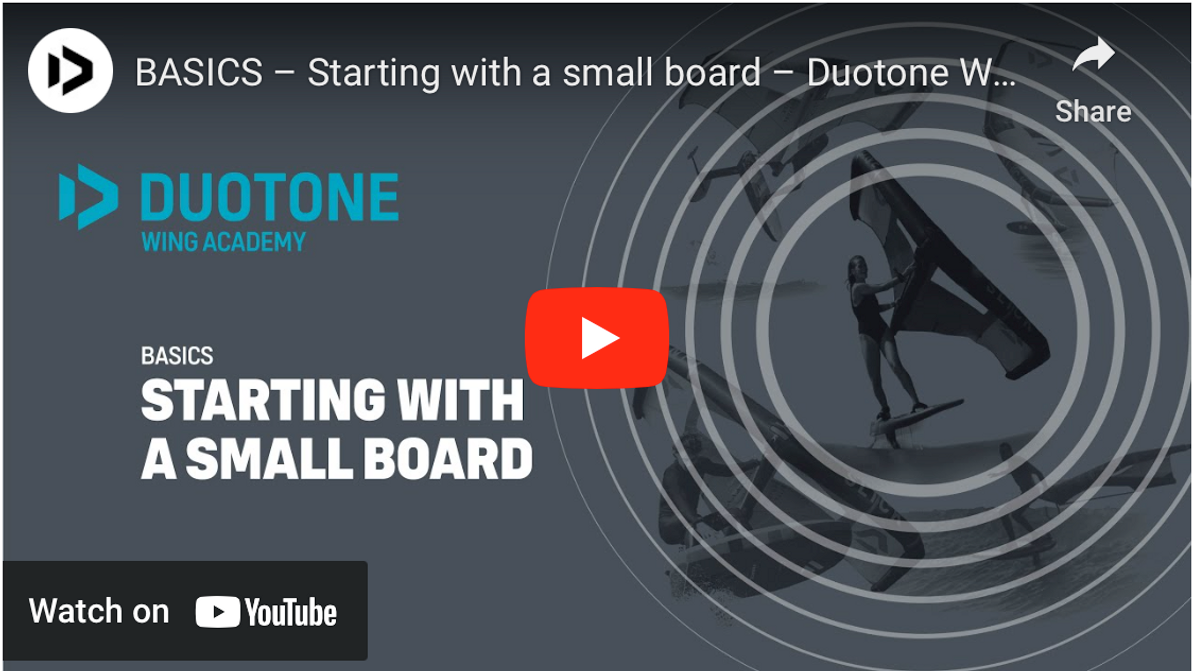Wing Foiling | How to Start on Small Boards | Duotone Wing Academy
Starting with a small board in the sport of wing foiling can be a thrilling yet challenging experience, especially under lighter wind conditions. This comprehensive guide by Duotone Wing Academy will walk you through the essential steps and techniques to ensure you get up and riding successfully.
Whether you're a beginner looking to get your footing or an experienced rider refining your skills, these tips will help you harness the power of your wing and board with confidence.
Introduction to Small Boards and Light Winds
Riding a small board requires not only good balance but also proficient pumping techniques. In lighter winds, these skills become even more critical as they compensate for the lack of natural wind lift. The key to mastering this starts with understanding the setup and initial positioning before you even get into the water.
Step 1: Initial Setup and Positioning
Before entering the water, it's important to correctly hold your wing. Start by gripping the front handle or boom with your front hand. Make sure the board is positioned between you and the wing. This setup is crucial for maintaining control as you move into deeper waters.
Step 2: Getting Onto the Board
With the wing in your front hand, approach the board and use your elbows to help lift yourself into a kneeling position. Aim to align yourself along the centerline of the board. This central positioning helps stabilize the board and prepares you for a smoother transition to standing.
Step 3: Transition to Standing
While still kneeling, reach back and grab the rear handle or the back of the boom with your back hand. Slightly sheet in to increase tension and control over the wing. Carefully lift your front foot and place it into the front foot strap. Follow with your back foot, positioning it either in front of the back strap or directly into it.
Step 4: Stand Up and Pump
As you stand up, begin to pump your wing to generate lift, speed, and balance. This action is crucial as it helps propel you forward and aids in lifting the foil out of the water. Ensure your movements are fluid and controlled to maintain stability.
Step 5: Pumping the Foil
Once you're up and standing, focus on pumping the foil. This involves rhythmic movements that help increase your speed and assist in keeping the foil airborne. The technique is similar to pumping on a skateboard, where timing and rhythm are key.
Key Elements for Success
- Front Hand Control: Always fly your wing with your front hand during initial takeoff. This helps maintain a forward position and control over the direction.
- Balance in Kneeling Position: When transitioning from kneeling to standing, keep your weight centered and balanced. This reduces the chances of tipping over.
- Pumping Techniques: Effective pumping of both the wing and the foil are vital for generating necessary lift and speed. Practice these movements to become more efficient.
Conclusion: Enjoy Your Ride
With these steps and tips, you're now ready to tackle small board riding in light wind conditions with more confidence. Remember, like any skill, wing foiling requires practice and patience. Spend time perfecting each step, and don't get discouraged by initial setbacks.
Recent Posts
-
2025 F-One Wing Lineup: Which One Is Right for Me?
At MACkite, we've always found F-One's wings to be a solid choice, and this year's lineup looks li …13th Mar 2025 -
Foil Drive Mounting Made Easy with Konrad Click Nuts
In a way, a Foil Drive is an "easy button" for foiling. You can get up easier, it's easier …12th Mar 2025 -
Why More Riders Are Mixing It Up with Wing Foiling, Foil Drive and Parawing
It's a great time to be a foiler. Just a few years ago, kitesurfers hopped onto foilboards, and it …11th Mar 2025




